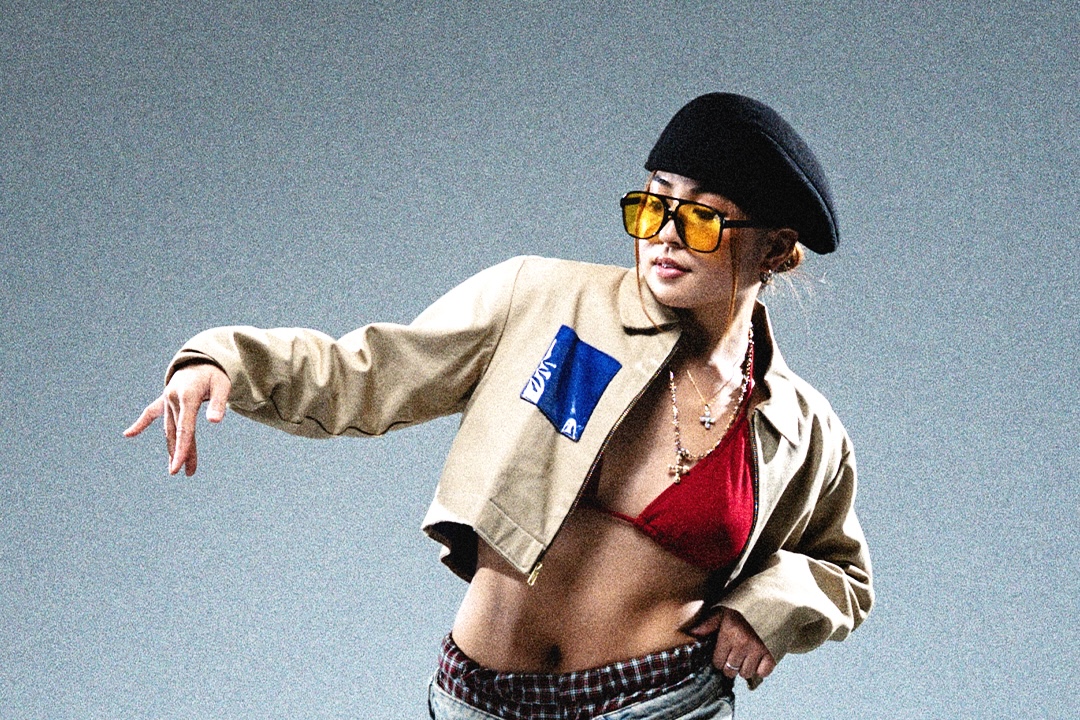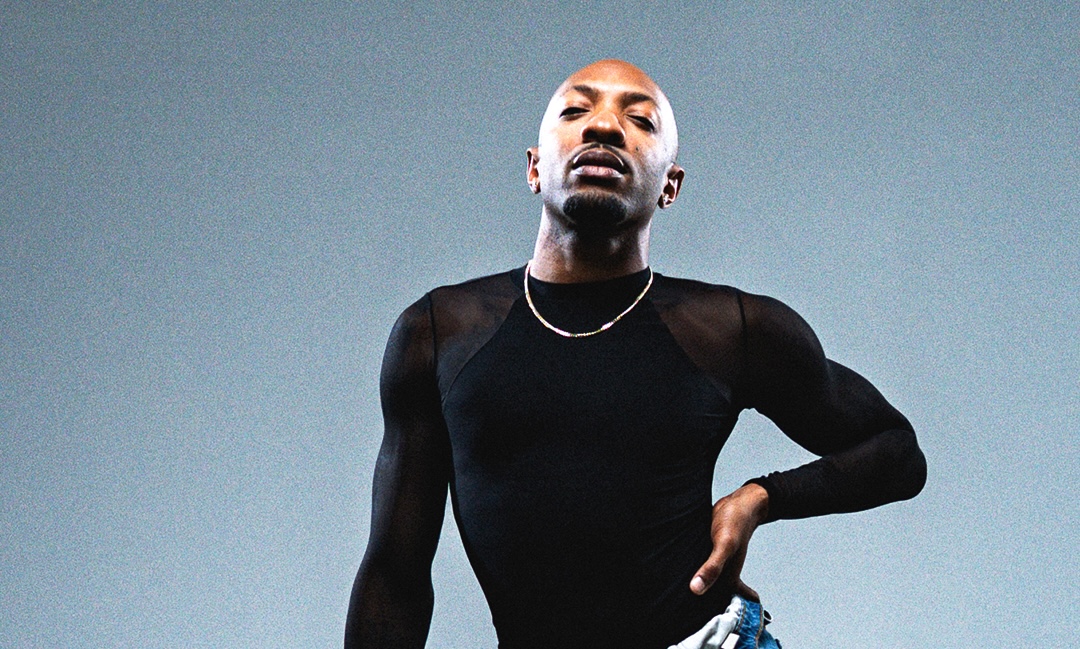A contemporary dance class? As Hip Hop dancers? Um, why?? We all know that dancer who kills it in the buck pieces but actually started as a technically trained studio dancer – you could say that he/she has a "leg up" on the competition.
See Related Article: How to Transition into the Dance Community As A Trained Dancer
Instead of wishing you could "do those spins" or lift your leg really high, learn how!Whether you've been in the community for years or just started dancing yesterday, every hip hop dancer should explore different styles of dance, especially contemporary. You can learn things about yourself (physically and artistically) that you might not have known, and the skills you can learn can help you grow as a dancer in general. Here are five reasons why you should take a contemporary dance class as well as five ways to take the things you learn in class and practice them at home!
1. You'll Widen Your Range of Motion... Everywhere.
Because this is a different style of movement, your body will have to move in different ways.
Your arms will have to curve a little different, your legs will have to straighten all the way to make a clean line, you'll have to point or flex your feet like you've never had to do in your Converse chucks.
See Related Article: How To Utilize Your Body To Execute Choreography Better From Carlo Darang (Cookies)
Depending on what type of contemporary dance class you're taking, your types of movements will vary as well.
Maybe you're taking a classical contemporary dance class that is built on modern and ballet foundations; your class will probably demand pointed toes, turning out, squaring your hips, pulling up, and upright posture.
Or perhaps you're taking a modern and abstract contemporary dance class; there can be weird angles, super upright or super concave postures, turning out and then turning in extremely, and energy in your pointed or flexed feet.
More commonly though, you might take a more mainstream contemporary dance class available at the bigger studios; your angles and movements can go from milk to Sprite, and it won't be about how many turns you can do or how high your leg goes but rather on how you can feel the music and take the choreography and make it your own.
Regardless of the type of contemporary dance class you take, your motions will be new and different – but a good kind of new and different.
Annnd, your flexibility will probably improve because the style can ask for beautiful lines and legs over 90 degrees, a skill that is not usually asked of in hip hop.
See Related Video: Stretching For Dancers | Dancers In Real Life | STEEZY Original
DIY Contemporary Dance Class Tip:
Try stretching every so often when you are at home. Do all of the stretches you do for warm ups with the team but hold them longer and really try to feel it in your muscles.
Sit on the floor and try to split your legs and keep them straight as you gently try to put your chest towards the ground (gently -- NEVER have someone push you down in this stretch or in life).
Take some time to point and flex your toes every so often, and try looking in the mirror and making different shapes with your arms (look up the arm positions of ballet for basic ideas to start).
2. You'll Engage Muscles You Didn't Know You Had.
Dancing feels different when you start working out, and you have to learn how to control your body in different ways; when you grow biceps/triceps/traps, your speed control with your upper body changes drastically, and you don't need as much energy as you used to (yay).
When you take a contemporary dance class, you'll have to use muscles that you never had to use before.
Even contemporary classes that are at beginning technique levels involve a lot more leg work than hip hop will demand; pointing and flexing your feet, going on the balls of your feet in releve, going into a deep second position plie and then getting back up really fast -- these all engage your lower body in ways that are not commonly prevalent in hip hop, and that's okay.
You'll have to use your core a lot more if you start taking technique classes, and you'll have to strengthen your legs to start being able to stand on the balls of your feet. Sure, arms may look flowy and beautiful on stage but it actually takes a lot of back muscle work to milk those arm movements.
These muscles can/will help you in hip hop, and your hip hop training can also help you in a contemporary dance class; sharp movements in hip hop are hard to learn, using muscles that a ballerina might not have.
Use your strengths, but also become stronger!
See Related Article: How To Execute Choreography Better By Utilizing Your Body With Carlo Darang (Choreo Cookies)
DIY Contemporary Dance Class Tip:
Every contemporary dance class and style will demand different things and different muscles, but your core will always be needed.
Doing sit ups, crunches (more than 300 please; we all know crunches to sit ups is analogous to the elliptical to a treadmill), and planks will help with your core.
Also, just learning to balance on one foot is a good way to engage your core, especially on the balls of your feet.
Always suck in your tummy and make sure your belly button is going in towards your spine; you will stay tight this way and engage that core automatically.
3. You'll Learn How to Take Care of Your Body.
If it wasn't for ballet, I wouldn't know what R.I.C.E. was, I wouldn't know how to stretch out a pulled groin, and I wouldn't know that you can ice your shin splints (weird).
When a basketball player learns how to take a jump shot, the first thing he/she learns is not how to jump properly -- he/she is usually told to jump high. When a technically trained dancer learns how to jump, he/she first learns how to use deep plie to jump high, and the importance of landing toe-ball-heel to absorb shock and avoid injury.
Aside from jumping, there are plenty of other things that you can learn in a contemporary dance class that can roll over to what you do in hip hop. You could be getting up from the floor using a lot of upper body strength when instead, you could use your legs and engage in your abs to get up swiftly. You could be kicking and popping your leg out to hit the '5 e and a 6' but you might be doing it recklessly rather than allocating your energy into certain parts of your leg. You could keep injuring your knee because you're turning it inwards instead of keeping it aligned with your ankle from a jump.
All of these things happen because we are learning things in the community as dancers not as technicians, which isn't a bad thing! However, learning the rationale and physics behind the movement isn't bad either; you can never be too informed.
See Related Article: How To Take Care Of Your Body As A Dancer
4. The Way You Feel Musicality Will Change
The way a contemporary instructor interprets the music and produces a piece will differ from a hip hop instructor not only because of personal styles but also because of the different range of movements that he/she can fill the music with.
It's like giving a coloring book to a person with crayons and a person with markers; not only will they color everything however they'd like to, but one will be waxy and one will be inky and maybe the person with crayons will color in layers and blend waxily while the person with markers will use the broad end of the marker to sweep across the page instead of the tip.
A great feeling during class is when you learn a piece to a song you know, but the instructor fills the music with different movements and highlights different beats that you hadn't even thought of, and when you add in a whole new style, the feeling can just be eye opening.
See Related Article: The Ultimate Guide To Musicality For Beginner Dancers
DIY Contemporary Dance Class Tip:
Musicality in itself that you have to work on personally by listening to all types of music consistently and picking up different beats and rhythms in the music and connecting them with different and dynamic movements. Just to give you an example of how two genres can interpret music completely different but equally as amazingly, watch:
[embed]https://youtu.be/AXEI2gBRwMs[/embed][embed]https://youtu.be/vITxPVhVYYE[/embed]
5. You'll Grow As A Dancer, In All Styles
Nowadays, there are so many dancers who can hit all 700 beats in a song but when asked to freestyle and vibe, they can't feel the music or just groove. Your ability to pick up the choreo and execute it as the choreographer shows it is great, but your personal style is what will set you apart.
Contemporary – or any other genre outside of what you normally do – will force you to think outside the box, whether you enjoyed the class or hated it.
You'll learn that you can count music differently, that you can breathe differently, that you can move differently. That in itself will help you grow up and grow out of the cookie cutter "hard hitting" pieces we all know and love.
There's nothing wrong with being able to execute a hard hitting piece proficiently, but think about why you like your favorite choreographer: it's not because he/she is really good at hitting all of the beats but rather because he/she has interpreted the music personally and filled it with movement that you would have never thought of.
DIY Contemporary Dance Class Tip:
The final tip that will wrap up this whole article is honestly just to take class or to watch a bunch of contemporary videos on YouTube. There are a plethora of contemporary choreographers and dancers (she's my favorite), even at the studios you might already take class from!
There's only so much you can do at home, so get off your booty and try taking a contemporary dance class. Whether it's a beginners contemporary dance class at your local studio with 12 year olds or an advanced technique class that you accidentally walked into, you're going to learn something from it.
he grey area between the genres of dance is growing every season; you see a lot more contemporary inspired movements in the community in each new set a team puts out. Yes, old school foundations and roots towards hip hop are very important, but the blending of the genres should inspire you to learn, grow, and create more.Take a class and your body will open and curve and close and hit and milk and pop in so many new ways, you'll feel it differently musically as well as muscularly, and who knows? Maybe you were born to be a contemporary dancer and win SYTYCD or something.
Do you know any additional exercises that may be helpful? Comment below and share with us!See how your contemporary dance classes are paying off by taking an urban dance choreography class on STEEZY Studio!










